Cooking over fire adds something special, not just to chunks of meat, but to fish and vegetables too. Ian Marconi, who started his career as a chef at Moro in London and now runs a bespoke catering company Jackrabbit, goes so far as to say he thinks of his barbecue as "a seasoning tool".
Niall Davidson, of Allta restaurant on South Frederick Street in Dublin, has been barbecuing since a young age, growing his love of cooking over fire by experimenting with wood from trees felled by storms on his mother's farm in Northern Ireland. "I like to think of it as an ingredient," he says.
Andy Noonan is co-founder of the Big Grill Festival, and there is nothing he can't or won't barbecue – over coals, of course. Gas barbecues tend to get dismissed as just "grills" by true enthusiasts. Noonan's summer barbecue menu includes dishes such as lemon-grass-skewered chicken hearts with Thai dipping sauce; and cherrywood-smoked chicken with Alabama white sauce.
These five are our crack team of experts, and here they share their top tips, what kit to buy or make, and what they are going to be cooking this summer
Grainne O’Keefe is head chef at Clanbrassil House in Dublin. At Clanbrassil House almost everything, except desserts, gets cooked over coals, she says. Recently she has been perfecting cote de boeuf aged for 80 days in cask-strength Teeling whiskey.
Francis Nesbitt is the owner of Croan Cottages in Co Kilkenny, five self-catering holiday lets on the grounds of his home and smallholding where he runs courses in cookery, beekeeping, butchery and foraging. His obsession with cooking with fire and smoke, and his love of DIY, came together in his wood-fired oven, which he cooks in year round.
These five are our crack team of barbecue and cooking-over-fire experts, and here they share their top tips, what kit to buy or make, and what is going to be cooking on their barbecues this summer.
Niall Davidson
Chef and co-owner, Allta Restaurant
I think the first and most important thing to think about when barbecuing is deciding which fuel to use. Charcoal is the most common, but I really love cooking over hardwoods, such as oak or birch, mixed with some fruit woods like apple or pear. I also only ever use wood from trees that have fallen naturally.
On my mum's farm in Northern Ireland we have a shed full of wood from trees downed in storms over the years that has been allowed to dry slowly. I like to think of it as an ingredient. But at home I tend to cheat a little and use 50:50 wood to charcoal. The next important step is to make sure the wood and charcoal has fully cooked down to an ember – with no flames – before you start to cook over it.
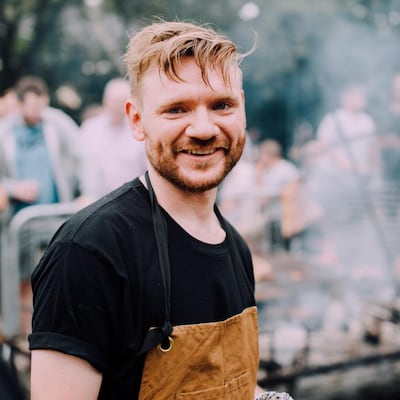
Coming into summer, I love cooking vegetables straight in the coals and then peeling off their outer black and burned layer to reveal an inner sweeter layer that has steamed in its own juices, with a hint of smoke. Because it has been cooked very quickly, it still has a great texture. White Roscoff onions, leeks and fennel all work perfectly this way and taste brilliant when served with fresh yoghurt.
Pretty much anything grown above ground from McNally’s farm has unbelievable flavour cooked this way. At home, I like to make a glaze of brown butter, split with an infused floral vinegar like rowan shoot and a little honey, to glaze the veggies as they roast.
With meat and larger cuts of fish, the most important step is to bring it up to room temperature before you start cooking and also ... be in no rush. With large pieces of meat, to get an even cook with a nice crust, I usually sear, then rest, then sear then rest and so on, repeating this process four to five times until the internal temperature of what I am barbecuing reaches 52 degrees or medium rare after resting. This usually equates to 42 degrees (or warm to the touch on your lip if you insert a metal skewer after the last sear), as the meat will jump 10 degrees while resting.
I love the Connemara clams from the guys at Killary fjord. They are awesome cooked over the flame, just till they open, and dressed with some dry apple cider and cep oil, or just lemon juice and olive oil is equally delicious.
I would also say, don’t be daunted by cooking bigger cuts of meat and fish whole and presenting them family style, with condiments and salads, and served with grilled sourdough bread and sheep’s yoghurt flatbreads. It’s the perfect way to eat in the sun.
When I was 18, I imported a barbacoa grill from Argentina and that started my love affair with cooking over fire. I used it for 10 years until it slowly rusted to death. At home now, I have a self-styled barbecue I built from bits and bobs I found on the farm. As far as commercial barbecues go, I think Webers are the best value for money and I love Joy Stoves. They are super compact, cheap and very effective, and great for travelling with.
I know this sounds pretty cheffy – but I love cooking at a barbecue with metal chopsticks. They are great to test the internal temperature of the meat when touched against your lips and when slow cooking shoulders of lamb, or larger cuts of whole fish, you can feel the collagen breakdown by how much resistance there is when you insert them into it.
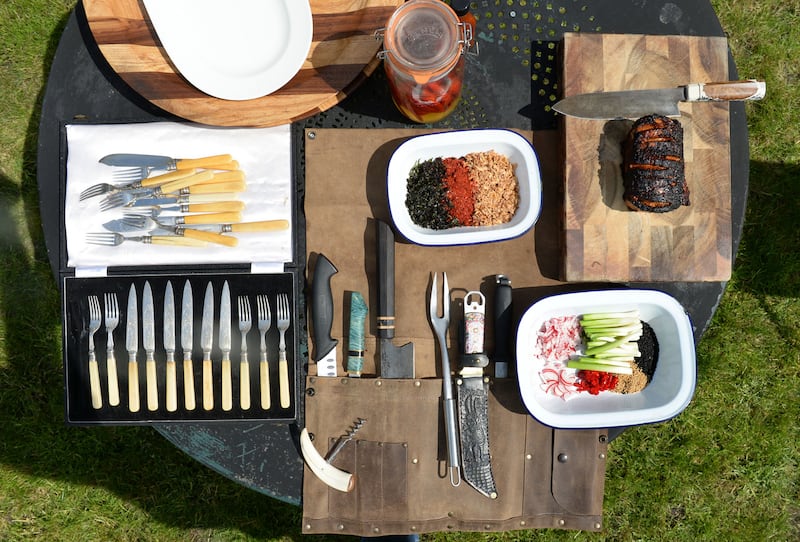
Andy Noonan
Cofounder of the Big Grill Festival
My top tip for successful barbecuing is to make the switch to charcoal, and learn how to create and control heat zones on your barbecue.
Split your hot coals into three zones:
Searing zone Amound of charcoal two to three inches high against one side of your grill, to sear meat and veg over a very high heat.
Grilling zone A smaller mound of coals, decreasing the size of the mound towards the centre of the grill to provide a more gentle heat
Safe zone No coals. This way you can turn your barbecue into an outdoor oven (if it has a lid), and cook indirectly, a must for chicken, and to control flare-ups by moving meat across to the safe zone to let the flames die down. Remember, when your meat is in the safe zone it will still cook, indirectly.

Direct grilling is cooking directly over coals. Indirect grilling is using radiant heat from coals that are not directly underneath your food, just like an oven. Use this method for fatty meat and chicken.
For gas grills, turn on all the burners to full and close the lid for 10 minutes. Hold your hand above each section to check where the higher and lower heat zones are – all gas grills should come with three heat zones. Apply the same rules as above for grilling directly and indirectly.
Invest in a good quality instant-read digital meat probe like the Thermapen. This means you’ll never overcook or undercook a piece of meat again. You’ll end up with perfect medium rare steaks and juicy chicken every time. Use the temperature chart provided and you can grill like a pro.
Some of the things I’ll be cooking on my barbecue this summer are grilled Baby Gem lettuces and cabbages, ember-cooked tomato and pepper salsa, new season smashed baby potatoes on the plancha, flank steak tacos and smoked goat shoulder tacos, lemongrass-skewered chicken hearts with Thai spicy dipping sauce, Tamworth pork belly skewers, Shorthorn picanha (rump cap), cherrywood-smoked chicken with Alabama white sauce, whole grilled sea bass, John Dory and mackerel, lamb al asador, smoked-lamb ribs; grilled-lamb striploin, lamb sweetbread tacos – and chimichurri served with anything and everything.
Francis Nesbitt
Smallholder and owner of Croan Cottages in Co Kilkenny
First thing to think about is: get the temperature right. You don't just fire cake ingredients into a blazing hot oven and hope for the best. Likewise, your barbecue food is going to be ruined if you put it on over naked flame, so it gets coated in soot. Don't cook on the barbecue until the flames have died down, then use the lid to control the airflow and temperature of the fire.
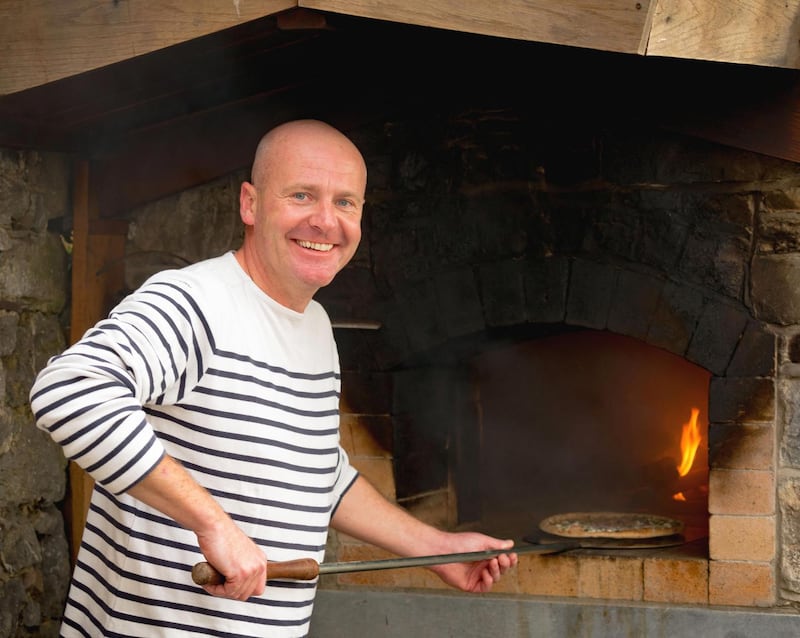
I love cooking with fire and smoke – and I also love a good DIY project. To satisfy both passions I’ve created a large fire pit from truck wheel rims, an asado grill, a Schwenker grill (a tripod with a grill that can be raised up and down over an open fire), a cold smoker, a hot smoker and, my favourite, a wood-fired oven.
For the wood oven, I made a large steel rake to help me move around the wood and charcoal so I can control the flame and temperature.
Speaking of temperature, I recommend to all of the participants on our courses at Croan Cottages that they get a digital probe thermometer and use it. It can be hard to judge how well a piece of meat is cooked by just looking at the surface colour.
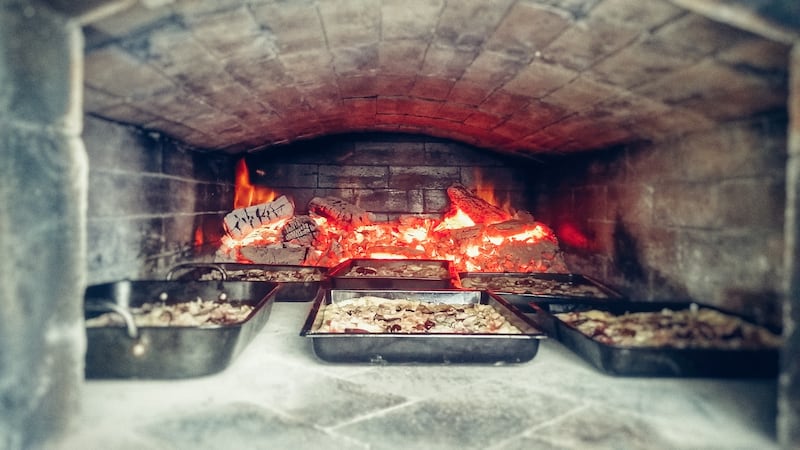
I use the wood oven at Croan all year round, but it’s definitely nicer in the summer. The oven stores a lot of heat, even after the fire has gone out and this heat is then slowly radiated. I have a spot for a stool by the door of the oven and it’s a lovely place to sit.
I will be cooking the old reliables this summer: burgers and chops on the barbecue and pizzas in the oven. But I’m also really looking forward to entertaining and having an excuse to cook something bigger like a rib of beef on the bone in the wood oven or a butterflied leg of lamb on the barbecue. If there are vegetarian visitors, they won’t feel left out. A barbecued cauliflower steak looks and tastes great.
Ian Marconi
Chef at Jackrabbit event catering
I began my career in Moro restaurant in London, cooking everything on a Turkish charcoal grill and wood burning oven, and now I use wood and charcoal grills and ovens for my catering business and in the creation of my Jackrabbit sauces.
My first advice is: give yourself plenty of time to start grilling. Light your fire at least an hour before you want to start cooking and make sure to start off with plenty of good lumpwood charcoal. Once the coals are white, and have stopped smoking, make a very hot side and a cooler side of the barbecue by pushing more of the coals to one side for the hot and leaving a section opposite where you can move your food if things are getting too charred to be able to cook through nicely.
This allows you to move things around under less pressure and gives you more control over everything – and more time to relax with your beer.
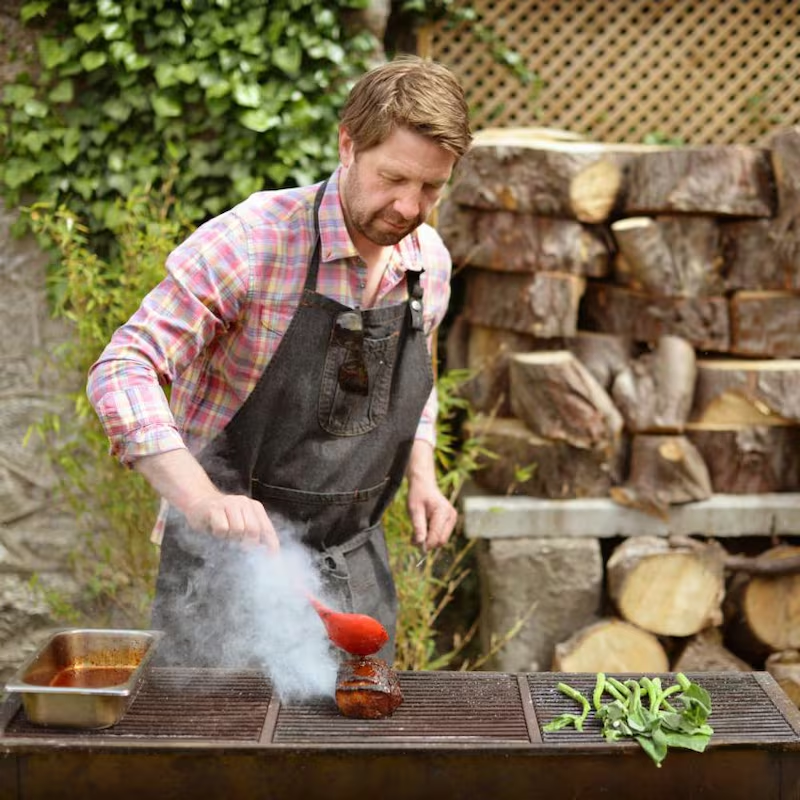
Also, if you plan ahead and choose a selection of things to barbecue that require different lengths of time and heat to cook, you won’t end up trying to do everything at the same time.
I think of the barbecue as almost a seasoning tool and use it to impart that smokey charred flavour to as many things as possible by either cooking all the way on it, or just starting food off on it before it goes into the oven to finish cooking.
You can make your veg and salads more interesting with a turn on the grill. I char all of the fresh chillies and vine tomatoes used in our sauces before they are blended and it gives them an incredible depth of flavour. I use good lumpwood charcoal and oak for the barbecue and in my Bertha oven
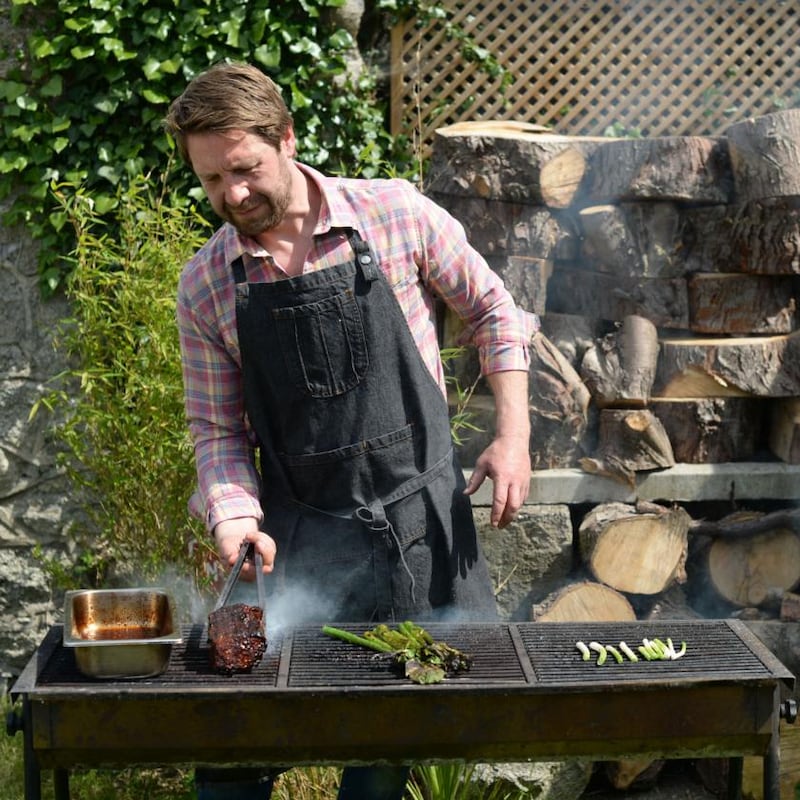
My essential tools are: a charcoal lighting chimney which helps you light your coals very quickly without any lighter fluid or fire lighters. They work with just some newspaper to get started ( Marks & Spencer and Woodies sell them), and a good sharp knife for carving. I have a slight addiction to custom-made chef knives and have a great ones from Lew Griffin knives in Galway and CoolToolMe in Russia.
This summer I have lots of grilled vegetables and salads on my menus. We’ll be doing a lot of slow-cooked free range pork belly over charcoal in my Bertha oven; brisket slow cooked in spiced yoghurt and caramelised onions that are then charred over oak.
Ian Marconi's Asian-style barbecued pork loin with Korean chilli seaweed sauce and charred greens
Serves 6-8
Ingredients
3kg boneless loin of pork, with rind removed but some fat left on.
500g tender stem broccoli
For the marinade:
100ml black rice vinegar
100ml malt vinegar
100ml tamari or soy sauce
100ml mirin
4tbsp Korean pepper flakes, or other mild chilli pepper flakes (to taste)
200ml sunflower oil
For the seaweed, fennel and chilli sauce:
2 fennel bulbs
6 cloves garlic
4tbsp gochugang (Korean chilli paste)
4tbsp tamari
4tbsp mirin
4tbsp black rice vinegar
4tbsp brown sugar
3tbsp ground up or chopped dried seaweed
To garnish:
Chopped red chilli, to taste
Coriander leaves
Finely sliced radish
Toasted sesame seeds
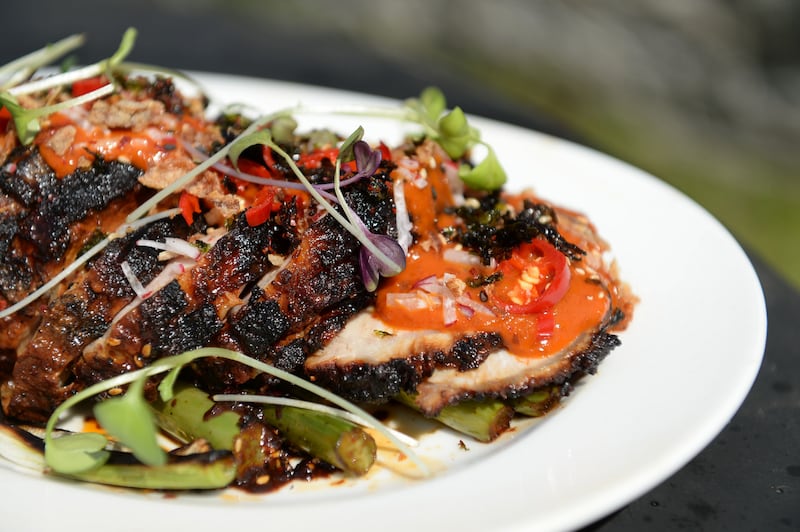
Method
1 Mix the marinade ingredients together. Score the fat on the pork and cover it in the marinade. Marinate the pork, in the fridge, ideally overnight, turning every now and then if the meat is not totally covered.
2 Make the sauce: slice and fry the fennel bulbs and garlic until golden. Add the other ingredients and 500ml of water. Simmer for 10 minutes, then blend till smooth.
3 Light your barbecue and separate the coals to give you a very hot and a cooler area. The loin will take a good 30 minutes to cook through so you need the cooler area for this.
4 Let the pork come to room temperature before you start cooking it. Hold on to the marinade, you will be using it later. Lay the pork, fat side down, on the hot part of the barbecue to get a nice char, then turn over and repeat, then move the meat to the cooler part to cook through.
5 Pour the marinade into a small pot and boil it up, it will be the baste for the pork.
6 Continually turn the pork and baste it with the marinade until cooked through.
7 Chargrill the broccoli, put it on a serving platter and drizzle it with the hot marinade.
8 Finely slice the pork and arrange on top of the broccoli, pour over more of the hot marinade to keep the pork juicy.
9 Drizzle the seaweed sauce over the top and garnish with toasted sesame seeds, chopped chilli and radish. You may have some of the sauce left over; it keeps well for a couple of weeks in the fridge, freezes well and can be used as a curry sauce base too.
Gráinne O’Keefe
Head chef at Clanbrassil House My top tip for successful barbecuing or cooking over fire is to allow your coals to die down before cooking over them. Fire might look great but gives a bitter taste when it licks up on to the food. You want the coals to be grey, but still very hot.
Also, get a meat probe, it is an essential if you want to cook perfect meat and fish. Resting meat and fish after you barbecue them is as important as cooking it. Always allow it to rest for half the cooking time before carving. It stops blood seeping on to the plate and also gives a more even cooking and tender finish.
If you want to slow smoke something or use the barbecue when it’s raining, invest in a Big Green Egg (a barbecue/smoker) that has a lid you can close. You can also maintain the temperatures more accurately if you’re slow smoking.
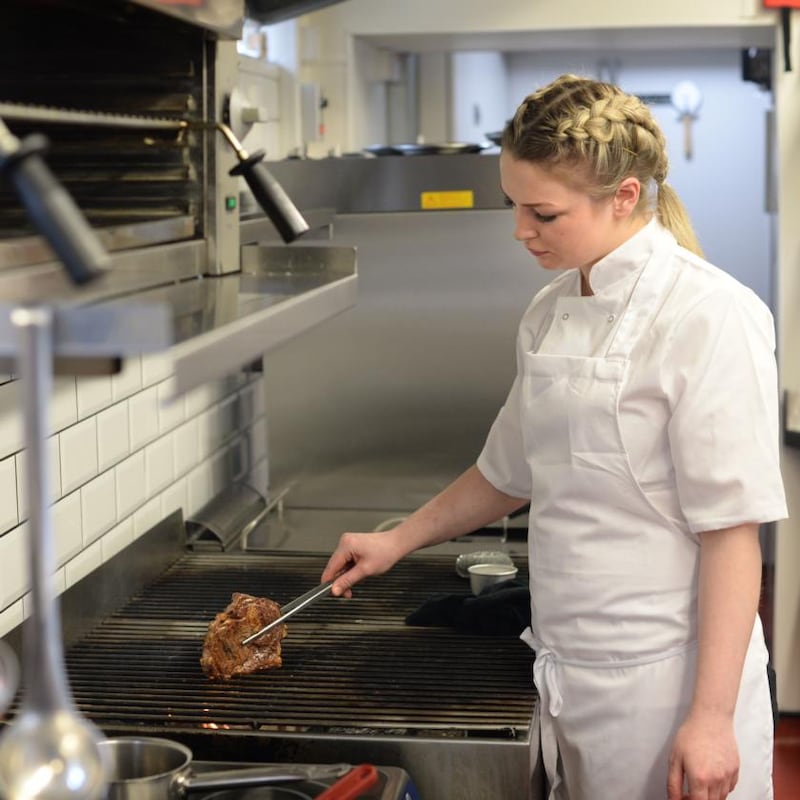
In Clanbrassil House we cook over charcoal and some wood. In BuJo [sustainable burger restaurant in Sandymount], we cook on a gas chargrill.
If you regularly barbecue lots of different foods, I’d recommend charcoal as you can adjust the temperatures by stacking the coals, and you can also use woods for flavour. If you’re just doing a simple barbecue every so often, gas works great, and it’s also easier to clean and less work to manage the heat. You get a great chargrilled flavour from both.
A Weber chimney starter is a good gadget. It is a metal chimney that you put the coals in to light them. You then transfer the coals from the chimney into the grill. It’s a much quicker way of lighting the coals and also you can cook directly over the chimney for foods that needs very high heat like oily fish and vegetables.
This summer I've been perfecting the whiskey-aged côte de boeuf we have on the menu at Clanbrassil House. Our butcher, Rick Higgins, is ageing steaks for 80 days in cask strength Teeling whiskey for me. The flavour is out of this world. I'll be buying a few from the restaurant to cook at home. Also, any of the meat from Peter Hannan of Hannan Meats in Moira is superb for the barbecue, so I'll be getting some sent down.
Almost every dish on the menu at Clanbrassil House – apart from desserts – are cooked over the coals. This runs from asparagus to steaks to fish and even cauliflower and our smoked carrots with anchovy. The flavour of cooking over fire is something you can’t replicate. It gives a lovely smokey charred flavour that compliments the food so well.
Gráinne O'Keefe's chargrilled rib-eye with grilled onions, chimichurri
Serves 4
Ingredients
2 x 250g rib-eye of grass-fed Irish beef
1 small white onion
10g Oriel sea salt
5g fresh cracked black pepper
5ml extra virgin olive oil
For the chimichurri
200ml extra virgin olive oil
2tbsp red wine vinegar
100g finely chopped parsley
3 cloves garlic finely chopped
2 jalapeños, deseeded and finely chopped
5g oregano
5g Oriel sea salt
3g cracked black pepper
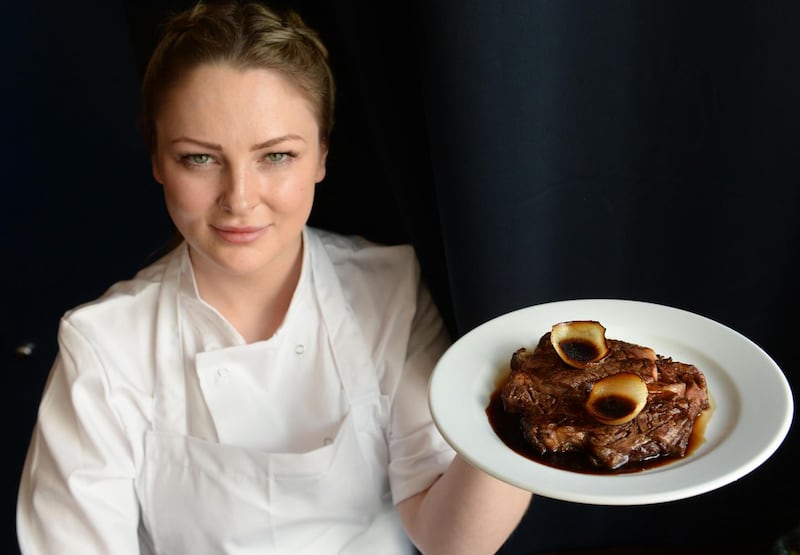
Method
1 For the chimichurri, mix all ingredients together and leave overnight to infuse.
2 For the rib of beef, season with Oriel sea salt on both sides and cook over hot coals. Turn the beef every three minutes until you each an internal temperature of 43 Celsius (use a meat probe).
3 At the same time, cut the onion in half lengthways and place directly over the coals until soft, peel off the carbon and separate the onion layers. Allow the beef to rest for 10 minutes before carving.
4 To assemble, slice the rib-eye and season again with Oriel sea salt and cracked black pepper.
5 Fill the onion petals with chimichurri and serve.




















